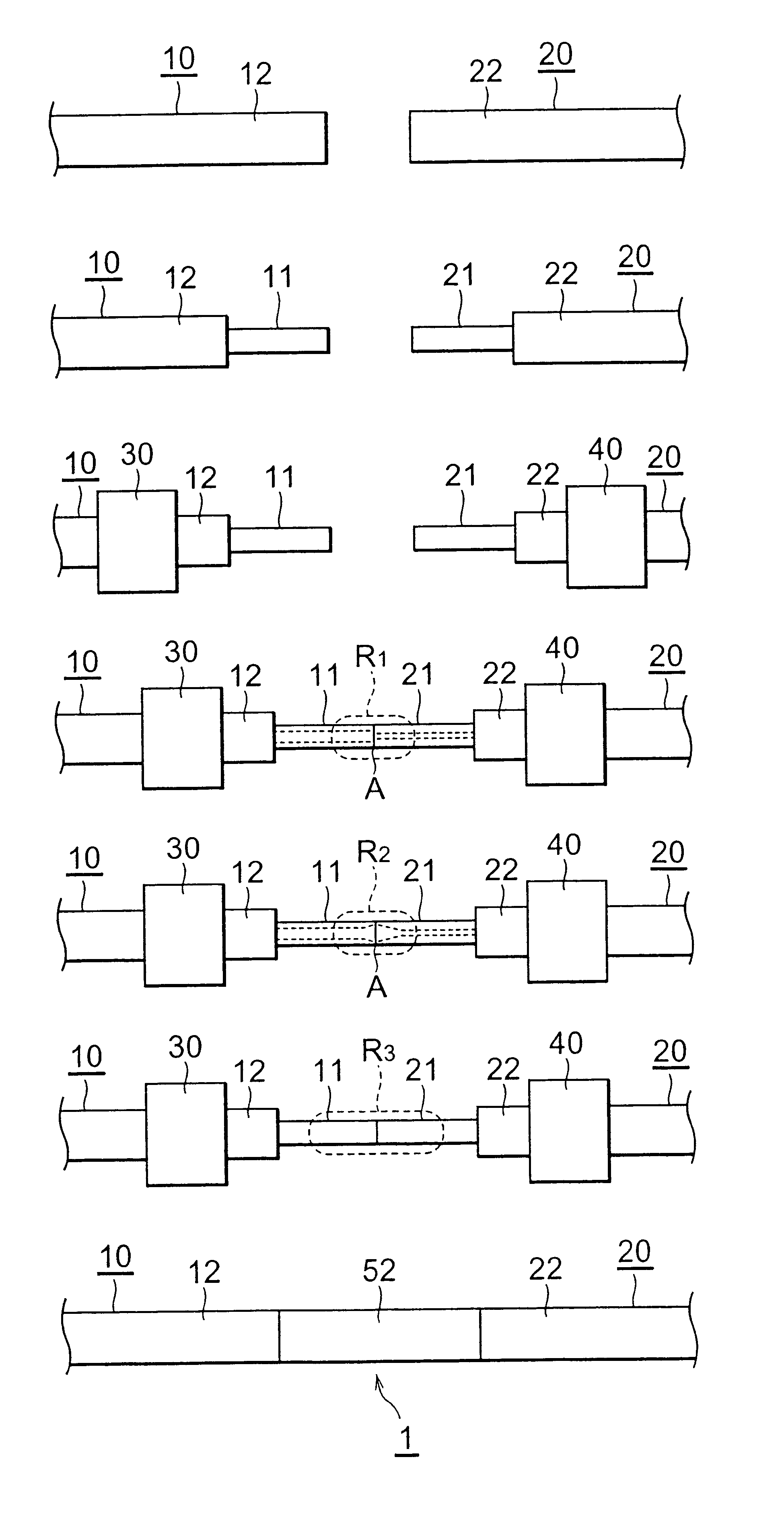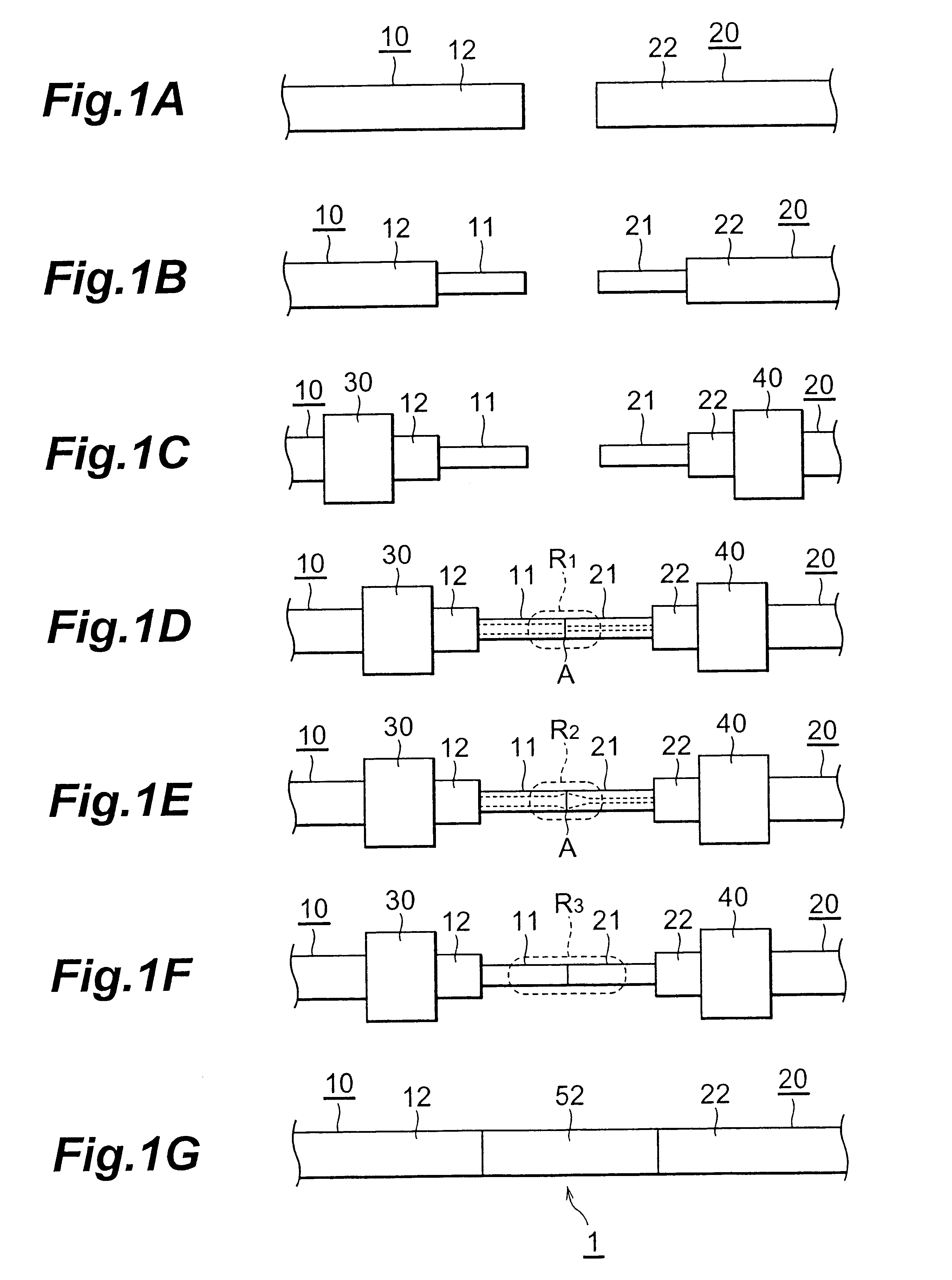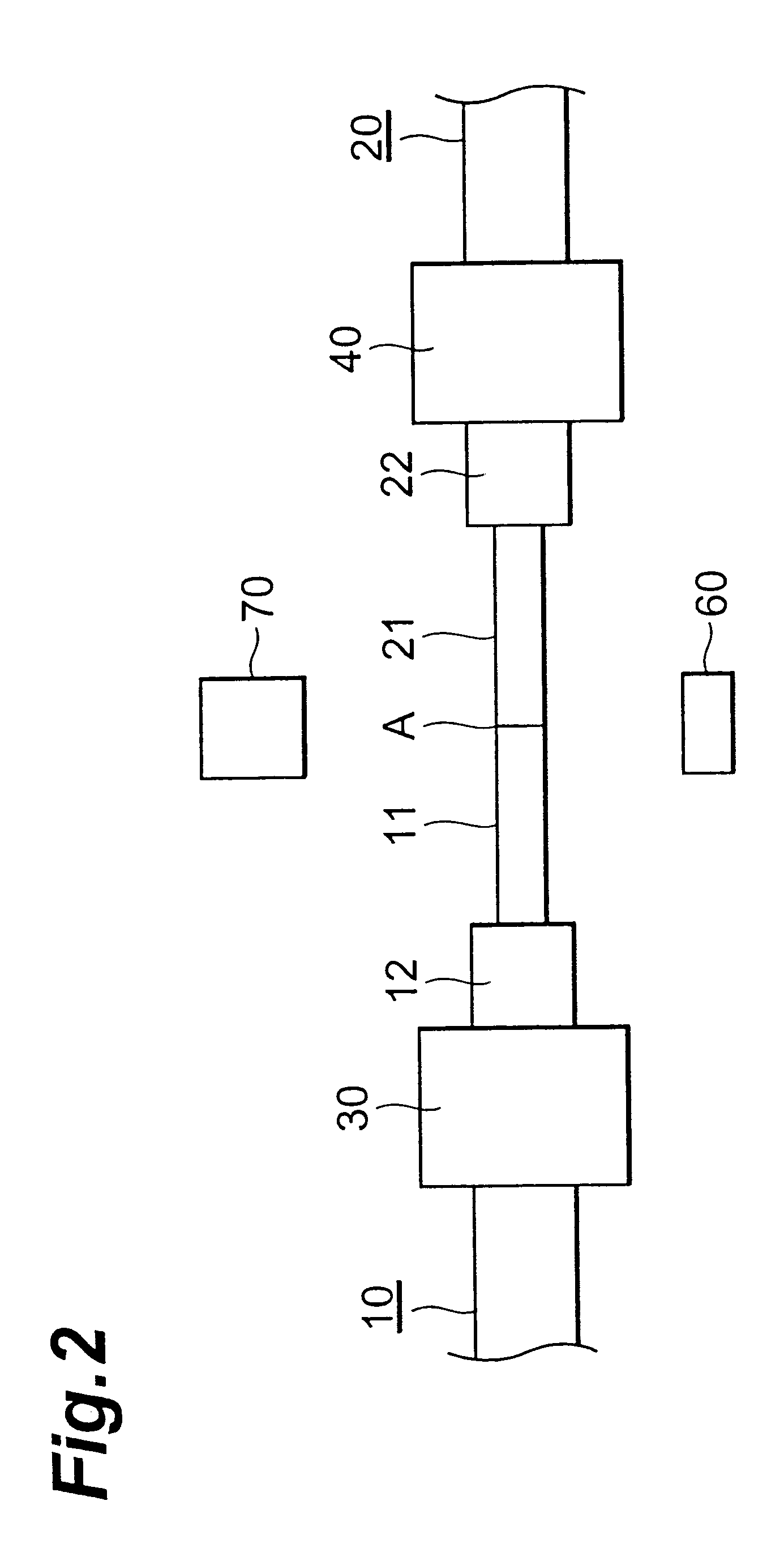Method of splicing two optical fibers
a technology of optical fibers and splicing methods, which is applied in the direction of optics, instruments, optical light guides, etc., can solve the problems of increasing the risk of fracture of optical fibers or increasing the loss of light propagating in optical fibers, and the mechanical strength of the fusion-spliced portion is lower than that of the other portions of optical fibers
- Summary
- Abstract
- Description
- Claims
- Application Information
AI Technical Summary
Benefits of technology
Problems solved by technology
Method used
Image
Examples
Embodiment Construction
below, a silica-glass-based single-mode optical fiber (the mode field diameter 10 .mu.m) having positive chromatic dispersion at the wavelength of 1.55 .mu.m was used as the optical fiber 10, and a silica-glass-based dispersion compensating optical fiber (the mode field diameter 5 .mu.m) having negative chromatic dispersion at the wavelength of 1.55 .mu.m as the optical fiber 20.
In the first example, arc discharge was used in each of the additive-diffusing step and the thermal-strain-removing step. Specifically, the end faces of the glass fibers 11, 21 were spliced each other by the arc discharge, using the fusion splicer, and in the additive-diffusing step and in the thermal-strain-removing step thereafter the fusion splicer was also used as it was. In the additive-diffusing step, the arc discharge current was 15 mA, the heating temperature was 1300.degree. C., and twenty cycles, each cycle consisting of a heating period of ten seconds and a rest period of sixty seconds, were repea...
PUM
| Property | Measurement | Unit |
|---|---|---|
| temperature | aaaaa | aaaaa |
| temperature | aaaaa | aaaaa |
| temperature | aaaaa | aaaaa |
Abstract
Description
Claims
Application Information
 Login to View More
Login to View More - R&D
- Intellectual Property
- Life Sciences
- Materials
- Tech Scout
- Unparalleled Data Quality
- Higher Quality Content
- 60% Fewer Hallucinations
Browse by: Latest US Patents, China's latest patents, Technical Efficacy Thesaurus, Application Domain, Technology Topic, Popular Technical Reports.
© 2025 PatSnap. All rights reserved.Legal|Privacy policy|Modern Slavery Act Transparency Statement|Sitemap|About US| Contact US: help@patsnap.com



